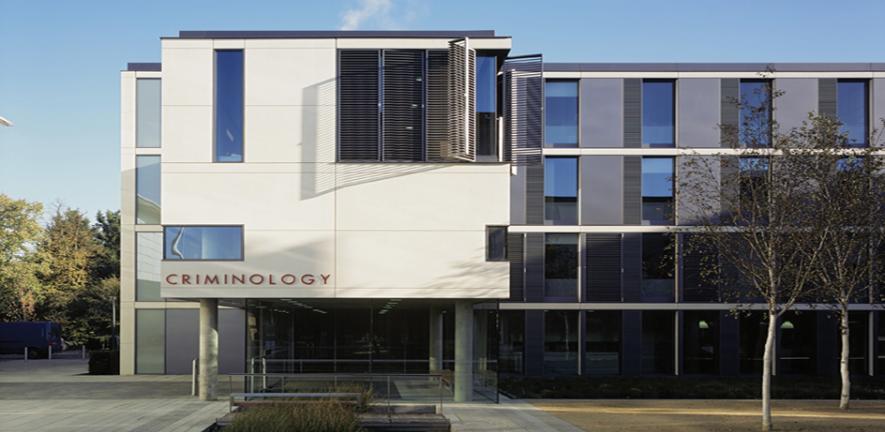
Criminologists in Cambridge are investigating the origins, prevention and control of crime in a fast-changing world.
Criminologists in Cambridge are investigating the origins, prevention and control of crime in a fast-changing world.
At the heart of research at the Institute is a ‘life-course’ approach to understanding crime.
At a time when problems like youth violence, terrorism, prison overcrowding and fear of crime are key issues in many countries, the work of Cambridge’s Institute of Criminology is as relevant as ever in its 50-year history.
At the heart of research at the Institute is a ‘life-course’ approach to understanding crime, as Professor Friedrich Lösel, the Institute’s Director, explained: ‘We’re interested in what causes individuals to commit crime; which steps can be taken to prevent them from doing so; and, when crime happens, how justice is dispensed, punishment is implemented and offenders can be rehabilitated.’
Above all, this isn’t ivory tower research. Central to the Institute’s work is the dual importance of fundamental scholarship and real-world practical relevance. The result is a portfolio that stretches from philosophical debate on penal ethics through to testing theories of crime prevention on city streets.
Those new to the concept of criminology might regard it as a small single discipline – after all it’s basically the study of criminal behaviour. But criminology is multifaceted, drawing from disciplines as diverse as law, sociology, psychology, biology, medicine, economics, political science and history. Fortunately, founding Director Sir Leon Radzinowicz had the foresight in 1959 to orchestrate a truly trans-disciplinary Institute of Criminology in the Faculty of Law. Today, within its £13.2 million home, funded by The Wolfson Foundation and into which the Institute moved six years ago, a vibrant and eclectic research community is flourishing.
Taking the long view
Research that traces the development of delinquent and criminal behaviour over many decades is a particular strength of the Institute. ‘Longitudinal studies give us a remarkable degree of insight into why some youngsters are delinquent while others are not, and to what extent this continues into criminal behaviour in adulthood,’ said Professor Lösel.
In fact, one of the longest running of such studies in the world continues at the Institute today. Begun in 1961, the Cambridge Study in Delinquent Development is unique in criminology not just for the length of follow-up period, but also because of the exceptionally high number (93%) of the original sample of 411 boys aged 8–9 years who are still being interviewed.
The study has determined the six most common predictors of criminal behaviour – a convicted parent, high daring, low school attainment, low family income, disrupted family and large family size. Professor David Farrington, who leads the study, explained the benefits of calculating risk scores for these predictors: ‘It’s clear from our study that the most persistent offenders start early, have long criminal careers and tend to produce the next generation of delinquent children. Prevention programmes targeted at the most at-risk children would help to break this cycle.’
Finding out what influences young people to break rules of conduct is a central aim of the Peterborough Adolescent and Young Adult Development Study (PADS+), funded by the Economic and Social Research Council. By 2012, PADS+ will have followed approximately 700 participants from ages 11 to 21 years, a critical period for personal and social development. ‘The research is clearly showing how social environments and their moral contexts affect young people differently depending on their personal morality and self-control,’ explained Professor Per-Olof Wikström, who leads the study. ‘This is crucial for understanding and preventing their crime involvement.’
The Institute is also involved in other long-running studies: the Sheffield Study (led by Professor Sir Anthony Bottoms) investigates why young adult offenders desist from crime; and studies in Zurich (Professor Manuel Eisner) and Erlangen-Nuremberg (Professor Lösel) address not only the development of delinquency but also its prevention in childhood.
‘Pressure point’ policing
At the Institute’s Jerry Lee Centre, the world’s first university centre devoted to experimental criminology, randomised controlled trials are being used to test crime prevention and criminal justice programmes.
Geographic ‘hotspots’ that show high levels of crime are well known at certain pressure points in cities. ‘In theory, if you can prevent offenders from committing crime in these areas, it may be possible to stop them altogether,’ said Lawrence Sherman, Wolfson Professor of Criminology and Director of the Centre. Professor Sherman is working with the Greater Manchester Police to test the idea that crime might be reduced by focusing police presence in these areas ‘to spoil the party for would-be offenders’. The theory is that one officer can deter more crime by policing a series of these individual hotspots, each of which may only cover a few hundred square feet, than by making less-structured patrols across a wider area.
Crime and punishment
Professor Sherman is also conducting randomised field experiments in the UK and Australia to test the idea of ‘restorative justice’ – a process by which the offender comes face to face with the victim to account for the crime. With 12 ongoing field experiments, involving 3,000 crime victims and offenders, this is the largest programme of randomised trials for a single crime prevention strategy. A recent independent evaluation found a 27% reduction in reconvictions of offenders two years after the restorative justice meetings. Other research in the Institute carried out by Dr Loraine Gelsthorpe addresses the practice of probation and community penalties as alternatives to imprisonment.
However, the Institute’s research doesn’t stop at the prison door. Work being carried out in the Prisons Research Centre (PRC), directed by Professor Alison Liebling, addresses the question of ‘what shapes prison life’. A major study is evaluating public- versus private-sector prisons: their values and practices, and how these affect prison quality and outcomes. One of the results of the PRC’s research has been the development of a survey- based management tool to measure prison quality or ‘moral performance’ objectively; prison managers are using this as a basis for strategic planning. Other research that is helping to improve the climate of prison life focuses on the central role of prison officers in using their discretion, determining prisoner wellbeing and preventing suicide in prison.
And what happens after prison? Work at the Institute follows up prisoners on release, looking for indicators of progress, and using systematic research to establish how well rehabilitation programmes are working. ‘Clearly, investing in non-evidence-based rehabilitation programmes is risky for society and potential victims,’ explained Professor Lösel. ‘Getting to the nub of what works is a priority for informing how best to rehabilitate and reduce re-offending.’
Targeting policy
As well as the many applied studies – such as evaluating the success of closed-circuit television, improved street lighting, treatment of sexual offenders, programmes against school bullying – research of a more theoretical nature happens at the Institute’s Centre for Penal Theory and Penal Ethics, led by Professor Andrew von Hirsch. Scrutinising contemporary theories of criminal law, punishment and crime prevention, researchers at the Centre are considering issues such as the comparative merits of penal and restorative justice approaches to dealing with convicted criminals, and the rationale for prohibiting offensive and ‘anti-social behaviour’. From a more practical perspective, Dr Adrian Grounds, a forensic psychiatrist, investigates cases of wrongful convictions in the justice system.
From the outset, a clear mission of the Institute has been to undertake research that contributes to evidence-based crime policy. Helping to disseminate the collective expertise of the Institute, Professors Farrington, Lösel and Sherman are part of the Campbell Collaboration Crime and Justice Group, an international network of researchers that promotes the best evidence on measures of crime prevention and control. ‘The ultimate aim of the Group mirrors that of the Institute of Criminology as a whole,’ commented Professor Lösel. ‘The backbone of both is to create a state-of-the-art knowledge base in criminology that will help reduce crime and increase justice in society.’
For more information about research at the Institute of Criminology, please visit www.crim.cam.ac.uk/
This work is licensed under a Creative Commons Licence. If you use this content on your site please link back to this page.





